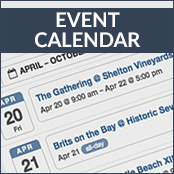Are you having trouble installing your new seat diaphragm to an assembled seat? Try this: modify a large (preferably old) screwdriver by cutting a slot in the blade to accept the diaphragm hook. This is then used to force the side hooks into place.
On my TR6, it was preferable to turn the front and back hooks DOWN and install them on the frame first using vise grips. The side hooks were turned UPWARDS and installed with the aforementioned screwdriver.
(This procedure also works on late TR4-250s, MGBs, and others!)
—J. Renfrew, Victoria, British Columbia, Canada.
Untidy hydraulic lines can really mess up the appearance of an otherwise sharp-looking engine bay. Even the pros have a hard time with this one. Many people have asked me how I got my lines routed so neat and crisp, and the answer is that I purchased a roll of bailing wire (sometimes culled tie wire) from the hardware store for about a buck. Bailing wire is soft and pliable but will stay where you put it.
Route the bailing wire in place of the hydraulic line, making the bends and straights just where you require them, then cut the wire right where the hard line will terminate. You now have an accurate template containing all the right bends and angles to match your final shape. Working comfortably on the bench, you simply match the shape of your hard hydraulic line to the wire template, holding one against the other to check your progress. Believe me, it works great!
Our British cars use hydraulic lines with a double flare on the ends, and unless you have a tool that can make this double flare, you will have to use the length of line as it comes (it comes in a variety of lengths). In this case, cut your bailing wire to the same length of line you will be using, and route it so that it ends up where it should. You’ll have plenty of bailing wire left over when you’re done, and if you’ve never used it before, you’ll find it as indispensable as duct tape for many odd jobs in the future.
—David Hill, Santa Monica, California.
Having just returned from a 3,000-mile journey in our ’59 Triumph TR3, I would like to submit a tip that made our trip more pleasant.
As with most English cars, some oil usually drips onto the ground under both my Triumph and my MG. To keep on good terms with friends while visiting with them, I created a “Depends” for our car with an inexpensive tarp.
Simply measure the width and length between the wheels and attach four thin pieces of wood to the tarp, folding over the excess material. Then, when you have decided where you will park, simply lay the tarp with one edge against the front wheel and then drive over the sheet until you feel the front tire against the wood on the other end.
When departing, simply wipe up any oil with a paper towel, fold up the tarp, and keep in the trunk. The wood, by the way, also helps keep the wind from blowing the tarp while you position the car on it.
—Rich Wagner, Walled Lake, Michigan.
When I restored my MGA, the new Moss Motors gear shift knob was a beautiful replacement for the 35-year-old original which was, by now, pretty worn with numerous scratches and dings. To protect my new one, I bought a small piece of black fleece at a fabric store a and fabricated a cover (with elastic at the bottom) to slide over the knob. Now, when entering a car show, I just pop off the glove, and not only is the knob unscratched, it is shined up well—ready for show!
—Lou Spradlin, Scotia, New York.




'Tech Tips: Fall 1998' has no comments
Be the first to comment this post!